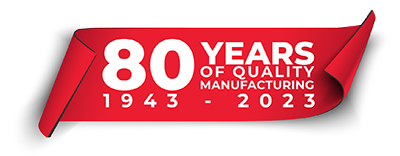York Tensioners - Which Type Should I Use?
Slotted vs. Pivoting Tensioners
The choice of slotted versus pivoting tensioners is usually based on drive geometry, the drive layout, and the available space and mounting structures. Both tensioner types are usually mounted with their direction of travel bisecting the belt path to take full advantage of their range of motion and spring force. Because of their geometry, slotted tensioners rarely find use as inside idler pulleys on short center distance drives unless the drive has large diameter sprockets. Because of a pivoting tensioner’s physical construction they can often fit where a slotted tensioner cannot.
Static vs. Dynamic Design Considerations
Because they are self adjusting, dynamic tensioners are most useful for drives where accessing the drive for tension measurement is difficult or where drive assemblers or field service people do not have accurate tools or jigs to accurately tension the drive.
Note: Dynamic tensioners should generally be locked in place once spring pressure applies the proper tension. Avoid using a non locked spring loaded tensioner on a reversing drive unless the belt is only lightly loaded in the reverse direction (where the tensioner is on the tight span). Do not use a non locked dynamic tensioner on applications where high load fluctuations are likely to occur.
Tensioner Placement
Tensioners can be placed either inside or outside of the belt, and on any span of a belt drive. Idler pulleys / tensioners will produce additional bending stress to the belt. The negative effects can be minimized with proper sizing and location. It is generally better to place the tensioner on the belt span with the least tension (slack span on a 2-pt drive) and on the inside / tooth side, as belts are manufactured to be shaped more easily in the inward direction. Outside tensioners are useful to increase belt wrap and are generally quieter especially on high speed applications.
After choosing your type of tensioner (slot or pivot and their dynamic or static versions), pick your specific tensioner size use the following chart. Click on the type of tensioner in the left hand column to see detailed 3-view drawings and data. Be sure to call York at (800) 534-8466 / (516) 746-3736 with any questions you have.
|
Size 4 Tensioners
*(10 lbs max avail as special order)
Size 3 Tensioners
|
- Minimum pulley height for Size 4 is .05 higher for plastic sleeved bearings, for Size 3 add .03
- Adjustment is the movement possible when mounting the tensioner to its mounting surface.
- Stroke is the range of operating travel possible for a mounted, dynamic tensioner from stop to stop of the spring
- Maximum pulley height above the mounting surface depends on specific pulley width. Consult factory for details.
Mounting Spacers
York tensioners are designed to mount securely onto a flat surface with just a single screw. The tensioners allow minimal clearance between the belt and mounting surface. Tensioners also feature different shaft lengths so they are also adjustable by York to provide greater clearance heights if needed.
Where even greater belt clearances are needed, York can provide machined, anodized spacers to act as a raised tensioner mounting base. York offers spacers in .38 inch increments up to 1.12 thick for Size 4 tensioners and in .25 inch increments up to .75 inches for Size 3 tensioners to lift the entire tensioner above the plate yet provide excellent mechanical holding for drive operation. Custom thicknesses are also available. So generally, pulley clearances up to nearly 1 inch from the mounting surface are not a problem. See www.york-ind.com/spacers or contact York for details.





